Wenge Wood Guide 2025: Properties, Uses & Expert Working Tips
Wenge wood, known for its rich color and durability, has gained popularity in various applications, from furniture to flooring. It is a hardwood derived from the wenge tree, scientifically known as Millettia laurentii, which is native to Central Africa. This wood is renowned for its striking appearance, primarily its deep, dark hue, which can range from dark brown to almost black. The unique aesthetic and robust properties of wenge wood make it a sought-after material for both artisans and homeowners alike.
In this article, we will explore the characteristics of wenge wood, its origins, applications, and the various aspects of working with this unique material. Whether you're considering it for your home or simply want to expand your knowledge about this fascinating wood, you'll find comprehensive information about its properties, uses, and maintenance.
What Is Wenge Wood?
Definition and Characteristics
Wenge wood is a dense, durable hardwood that originates from the wenge tree. Its Janka hardness rating is approximately 1,830 lbf, making it one of the harder woods available. This hardness translates into exceptional durability and resistance to wear and tear, which is why it is often used in high-traffic areas and for items that experience a lot of use, such as furniture and flooring. The color of wenge wood is typically dark brown to black, often featuring lighter streaks, which adds to its visual appeal.
The density of wenge wood also contributes to its stability, making it less prone to warping and changes due to humidity and temperature fluctuations. When it comes to the aesthetic, wenge wood is characterized by a straight, interlocked grain that can be visually striking when finished properly. The wood's texture is fine and even, which allows for a smooth finish that enhances its rich color.
Environmental Impact
Sourcing wenge wood raises important environmental considerations. As a tropical hardwood, wenge has faced scrutiny due to deforestation and unsustainable logging practices in its native regions. It is vital to ensure that any wenge lumber purchased is sourced from sustainable and legal operations. Organizations such as the Forest Stewardship Council (FSC) provide certification for wood products, ensuring they come from responsibly managed forests.
Where Does Wenge Wood Come From?
Geographic Origin
Wenge wood is primarily sourced from Central Africa, specifically countries such as the Democratic Republic of Congo, Gabon, and Cameroon. The wenge tree thrives in tropical rainforests, where it can grow to heights of over 100 feet. These regions provide the necessary conditions for the tree to flourish, producing the dense hardwood that is so highly valued in the woodworking industry.
Sustainable Sourcing
Due to its popularity, the demand for wenge wood has led to concerns regarding over-harvesting and sustainability. It is crucial for consumers to be aware of the origins of the wood they purchase. Look for suppliers who can provide documentation about the wood's sourcing, ensuring it comes from sustainable practices and does not contribute to deforestation.
Trade Regulations
The international trade of wenge wood is subject to various regulations aimed at protecting endangered species and promoting sustainable practices. The Convention on International Trade in Endangered Species of Wild Fauna and Flora (CITES) regulates the trade of certain species of wood, including wenge. It's essential for manufacturers and consumers alike to stay informed about these regulations to ensure ethical sourcing.
Wenge Wood Applications
Furniture
One of the most common uses of wenge wood is in the production of furniture. Its durability and aesthetic appeal make it an excellent choice for high-end furniture pieces such as tables, chairs, and cabinets. Wenge wood furniture often features a sleek, modern design that complements contemporary interior styles. The wood's natural beauty is enhanced by various finishing techniques, allowing it to fit seamlessly into various design themes.
In addition to its visual appeal, wenge wood is highly resistant to scratches and dents, making it a practical choice for items that undergo daily use. Many furniture makers appreciate working with wenge because of its ability to hold intricate details while still being robust enough for functional pieces.
Flooring
Wenge hardwood flooring has become increasingly popular due to its striking appearance and durability. The rich, dark tones of wenge wood can create a stunning contrast with lighter walls and furnishings, adding depth and sophistication to any space. The hardness of the wood also makes it suitable for high-traffic areas, where it can withstand the wear and tear of everyday life.
When considering wenge flooring cost, it's important to note that while it may be more expensive than some softer woods, its longevity and low maintenance requirements can make it a worthwhile investment. Additionally, the unique beauty of dark wenge wood can increase the value of a home, making it an appealing choice for homeowners looking to enhance their property.
Musical Instruments
Beyond furniture and flooring, wenge wood is also utilized in the production of musical instruments. Its density and tonal qualities make it an excellent choice for instrument components, particularly in the construction of drums and guitar bodies. The unique sound characteristics of wenge wood can add warmth and richness to the instruments, making them sought after by musicians and collectors alike.
Working with Wenge Wood
Tools and Techniques
When working with wenge wood, it's essential to use the right tools and techniques due to its density and hardness. Traditional woodworking tools can struggle with this type of wood, so it's recommended to use carbide-tipped blades and bits to achieve cleaner cuts. Power tools, such as saws and routers, can make the process easier, but care should be taken to ensure they are set to the appropriate speeds and feed rates to avoid damaging the wood.
Finishing
The finishing process for wenge wood is crucial in enhancing its natural beauty. Many woodworkers prefer to use oil-based finishes, which penetrate the wood and bring out the richness of the wenge wood color. A wenge finish can highlight the grain and create a beautiful sheen, making the wood appear even more luxurious.
Before applying any finish, it's essential to sand the wood properly to achieve a smooth surface. Given its tight grain, finer grits of sandpaper are recommended to avoid scratching the surface. After sanding, the wood should be cleaned of any dust to ensure a flawless finish.
Maintenance
Maintaining wenge wood requires some attention to keep it looking its best. Regular dusting and cleaning with a damp cloth can help prevent dirt and grime buildup. For furniture, it's advisable to use a furniture polish or oil to maintain the sheen and protect the surface.
Avoid using harsh chemicals or abrasive materials, as they can damage the finish. In high-traffic areas, such as wenge wood floors, regular sweeping and the occasional deep cleaning will help preserve the wood's appearance and durability.
Wenge Wood vs Other Premium Hardwoods
Understanding how wenge wood compares to other premium hardwoods can help you make informed decisions for your woodworking projects. Here's how wenge stacks up against other popular exotic and domestic woods.
Wenge vs Other Dark Exotic Woods
Wenge vs Cocobolo Wood
While both are exotic hardwoods with rich coloration, they serve different purposes. Cocobolo wood features vibrant orange-red hues with darker streaks, contrasting with wenge's deep brown-to-black appearance. Cocobolo has a slightly higher Janka hardness rating (2,960 lbf vs wenge's 1,830 lbf) and contains natural oils that make it water-resistant, making it ideal for outdoor applications and turned objects. However, wenge's more neutral dark tones make it better suited for modern furniture and flooring where a sophisticated, understated elegance is desired.
Wenge vs Purpleheart Wood
Purpleheart wood offers a striking purple coloration that fades to brown over time, while wenge maintains its consistent dark brown color throughout its lifespan. Both woods share similar hardness levels, but purpleheart's unique color makes it more suitable for accent pieces and decorative applications. Wenge's stability and neutral dark tones make it the better choice for large furniture pieces and flooring where color consistency over time is crucial.
Wenge vs Premium Furniture Woods
Wenge vs Teak Wood
Teak wood and wenge represent different approaches to premium furniture making. Teak's golden-brown color and natural oils make it the gold standard for outdoor furniture and marine applications, while wenge excels in indoor contemporary furniture. Teak is softer (1,155 lbf Janka hardness) but more weather-resistant due to its oil content. Wenge's superior hardness makes it better for high-wear surfaces like tabletops and flooring, while teak's natural weather resistance makes it unmatched for outdoor use.
Wenge vs Sapele Wood
Sapele wood offers a more affordable alternative to wenge with its reddish-brown color and interlocked grain pattern. Sapele is significantly softer (1,410 lbf) than wenge, making it easier to work with but less durable for high-traffic applications. While sapele is excellent for cabinetry and millwork, wenge's superior hardness and striking dark color make it the premium choice for statement furniture pieces and luxury flooring installations.
Wenge vs Domestic Hardwoods
Wenge vs Curly Maple
Curly maple represents the opposite end of the color spectrum from wenge. While curly maple showcases light cream colors with distinctive figured grain patterns, wenge provides deep, dark sophistication. Maple's moderate hardness (1,450 lbf) makes it easier to machine and finish, but wenge's superior durability (1,830 lbf) makes it better suited for high-use applications. The choice between them often comes down to design preference: light and figured versus dark and sophisticated.
Wenge vs Specialty Application Woods
Wenge vs Ipe Wood
Both wenge and Ipe wood are extremely hard and durable, but they excel in different applications. Ipe's exceptional weather resistance and fire rating make it the premier choice for outdoor decking and structural applications. Wenge's superior workability and finishing characteristics make it better suited for indoor furniture and millwork. While Ipe is harder (3,684 lbf), its difficulty in working makes wenge the more practical choice for detailed furniture making.
Wenge vs Olive Wood
Olive wood offers unique grain patterns and natural antimicrobial properties, making it excellent for cutting boards and kitchenware. However, olive wood's limited availability in large sizes and moderate hardness (1,200 lbf) restricts it to smaller decorative pieces. Wenge's availability in larger dimensions and superior hardness make it suitable for substantial furniture pieces and flooring where olive wood cannot compete.
When to Choose Wenge Wood
Based on these comparisons, wenge wood is the optimal choice when you need:
- Maximum durability for high-traffic indoor applications
- Sophisticated dark aesthetics for modern or contemporary designs
- Large-format applications like flooring or substantial furniture pieces
- Excellent workability combined with premium appearance
- Color stability that won't fade or change significantly over time
Understanding these distinctions helps explain why wenge commands premium pricing and remains a favorite among furniture makers and architects who prioritize both aesthetics and performance in their wood selection.
The Color of Wenge Wood
What Color is Wenge Wood?
When asking, "what color is wenge wood?," the answer typically leans towards a deep, dark brown, often bordering on black. This rich hue is what makes it so desirable for many applications. The darker color can create a dramatic contrast when paired with lighter woods or materials, making it a popular choice in modern design.
Variations in Wenge Color
While the predominant color of wenge wood is dark brown to black, variations do exist. Some pieces may exhibit lighter streaks or hints of reddish-brown, which can add character and uniqueness to each board. Understanding the different wenge colour variations can help consumers select the right pieces for their projects.
Influence of Staining
If you're looking to alter the appearance of wenge wood, various stains and finishes can impact its color. When applying a wenge wood stain, it's essential to conduct a test on a small, inconspicuous area to ensure the desired result. A finish can deepen the color, enhancing the natural beauty of the wood while preserving its unique characteristics.
Health and Safety Considerations
Is Wenge Wood Toxic?
One common question regarding wenge wood is, "is wenge wood toxic?" Generally, wenge wood is not classified as toxic; however, it can cause allergic reactions in some individuals, particularly when sanding or cutting the wood. The fine dust created from working with wenge can lead to respiratory issues or skin irritation in susceptible individuals.
Precautions When Working with Wenge
To minimize health risks, it's advisable to wear a mask and protective eyewear when working with wenge wood. Proper ventilation is also essential to reduce exposure to wood dust. If you experience any adverse reactions, it’s best to consult with a medical professional.
Long-Term Safety
Once finished and sealed, wenge wood furniture and flooring pose minimal health risks. The sealing process helps to contain any potential allergens or irritants, making it safe for use in homes and offices. However, always ensure that any finishes used are non-toxic and safe for indoor use.
Frequently Asked Questions About Wenge Wood
Common Questions About Wenge Wood Properties
What is wenge definition?
Wenge is a tropical hardwood derived from the Millettia laurentii tree, native to Central Africa. It's characterized by its exceptional density (1,830 lbf Janka hardness), dark brown to black coloration with lighter streaks, and straight interlocked grain pattern. The term "wenge" refers both to the tree species and the lumber produced from it.
What is wenge wood used for?
Wenge wood is primarily used for high-end furniture making, luxury flooring installations, and musical instrument construction. Its exceptional durability makes it ideal for tabletops, cabinets, chairs, and high-traffic flooring. Additionally, its density and tonal qualities make it valuable for drum shells and guitar bodies.
What is wenge wood meaning?
The name "wenge" originates from the local African languages where the tree grows naturally. In woodworking terminology, wenge has become synonymous with premium dark hardwood that combines exceptional durability with sophisticated aesthetics, representing quality and luxury in furniture and flooring applications.
Questions About Wenge Wood Characteristics
What colour is wenge wood?
Wenge wood displays a rich dark brown color that can appear almost black, often featuring distinctive lighter brown streaks running through the grain. This natural color variation gives each piece unique character while maintaining the overall dark, sophisticated appearance that makes wenge highly sought after.
What color is wenge wood after finishing?
When properly finished with oil-based products, wenge wood's color deepens to a lustrous dark brown-black with enhanced grain visibility. The finishing process brings out the natural contrast between the dark base color and lighter streaks, creating a more pronounced and elegant appearance.
Is wenge wood toxic?
Wenge wood is not classified as toxic, but it can cause allergic reactions in sensitive individuals. The primary concerns arise from wood dust during cutting and sanding, which may cause respiratory irritation or skin sensitivity. Once properly finished and sealed, wenge poses minimal health risks for everyday use.
Questions About Wenge Wood Applications
What is wenge wood used for in furniture?
In furniture applications, wenge excels in pieces requiring both durability and visual impact. It's commonly used for dining tables, executive desks, bedroom furniture, and modern cabinet work. Its scratch and dent resistance make it particularly suitable for frequently used surfaces, while its dark color provides dramatic contrast in contemporary designs.
Where does wenge wood come from?
Wenge wood originates from Central African tropical rainforests, primarily harvested in the Democratic Republic of Congo, Gabon, and Cameroon. The wenge tree (Millettia laurentii) grows to heights exceeding 100 feet in these regions, where the climate conditions produce the dense, high-quality timber valued worldwide.
What is wenge hardwood flooring?
Wenge hardwood flooring represents a premium flooring option featuring the wood's characteristic dark brown-black color and exceptional durability. With its 1,830 lbf Janka hardness rating, wenge flooring withstands heavy foot traffic while providing a sophisticated aesthetic that complements modern interior designs and increases home value.
Technical and Maintenance Questions
What is wenge janka hardness?
Wenge wood has a Janka hardness rating of approximately 1,830 lbf, placing it among the harder commercially available woods. This hardness level provides exceptional resistance to dents and scratches, making it suitable for high-wear applications like flooring and frequently used furniture surfaces.
Define wenge wood characteristics?
Wenge wood is defined by several key characteristics: extreme density and hardness (1,830 lbf), dark brown to black coloration with lighter streaks, straight interlocked grain pattern, fine even texture, excellent dimensional stability, and natural resistance to warping. These properties combine to create a premium hardwood suitable for demanding applications.
Is wenge wood expensive?
While specific pricing varies by supplier and market conditions, wenge is considered a premium hardwood that typically costs more than domestic species due to its exotic origin, limited availability, and exceptional properties. However, its longevity and low maintenance requirements often justify the higher initial investment over time.
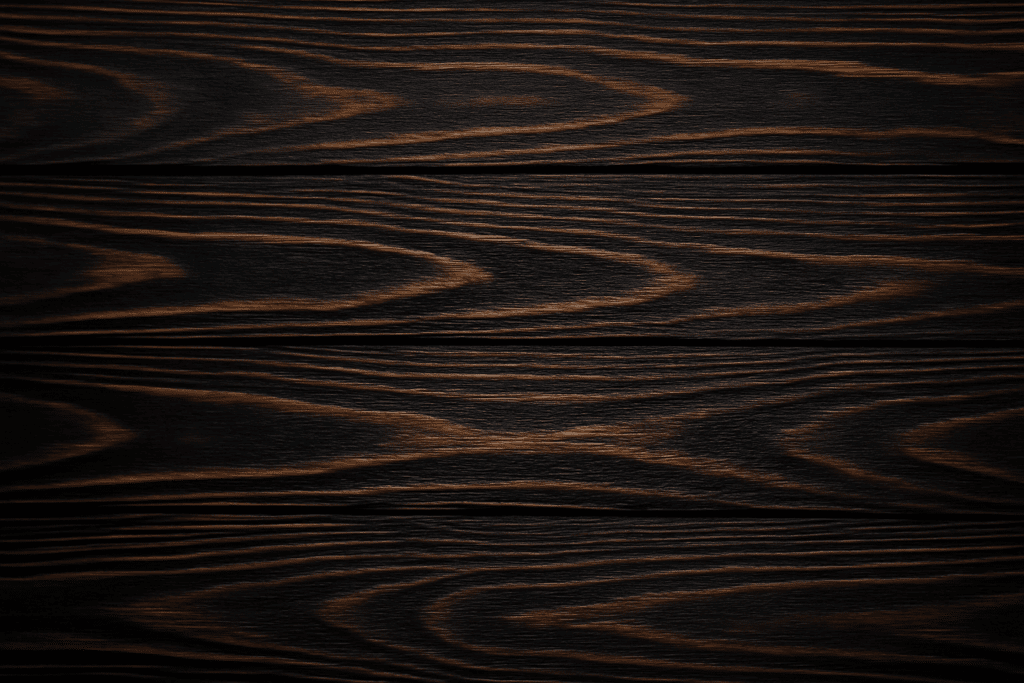
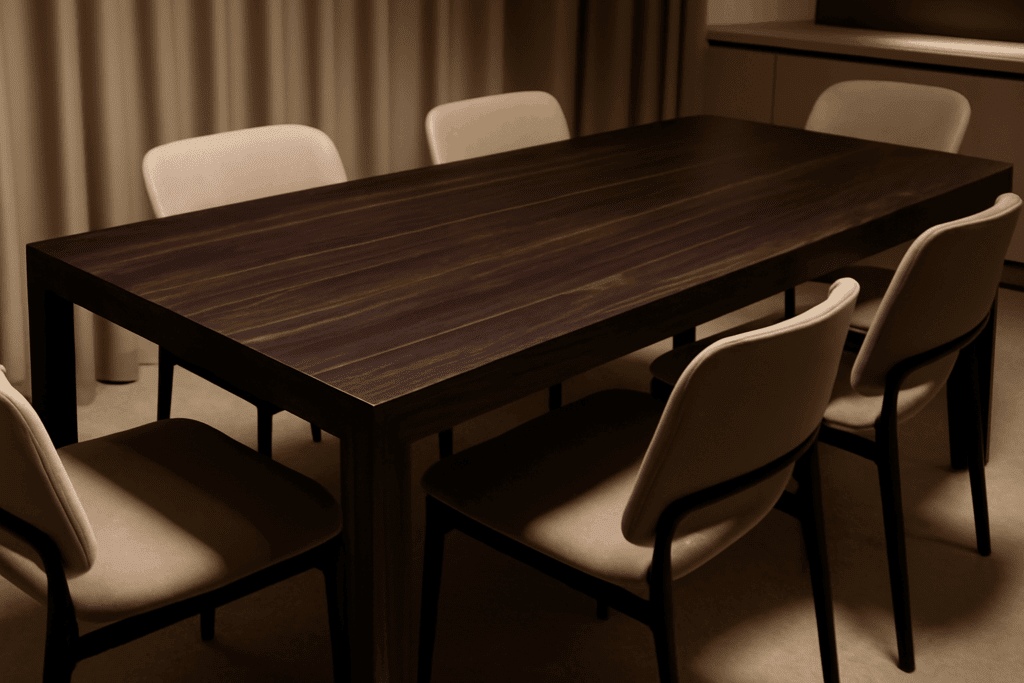
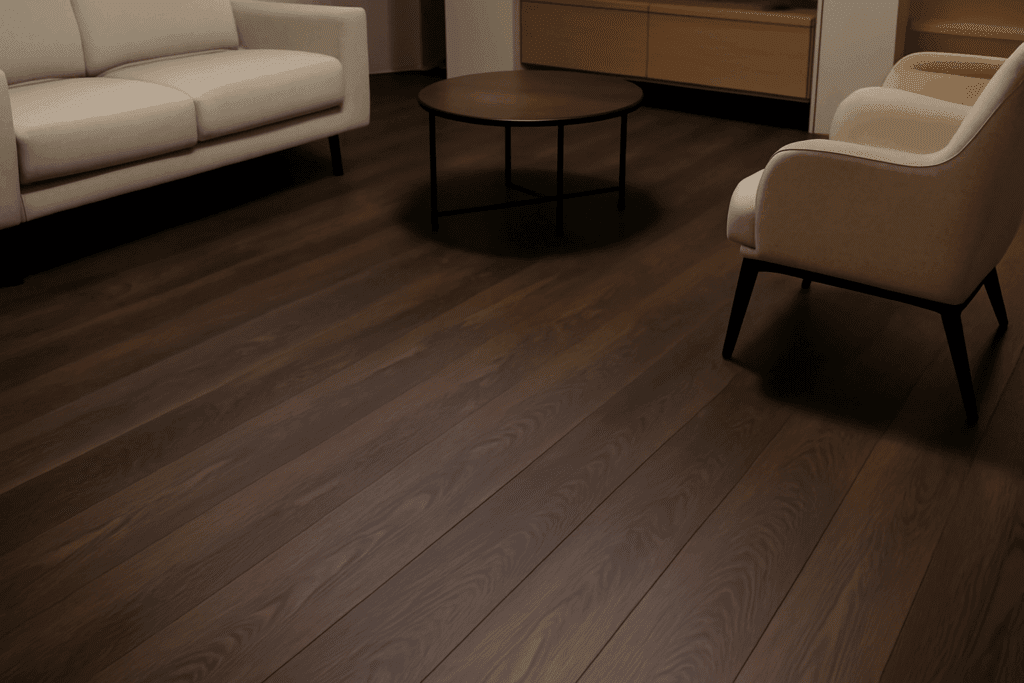
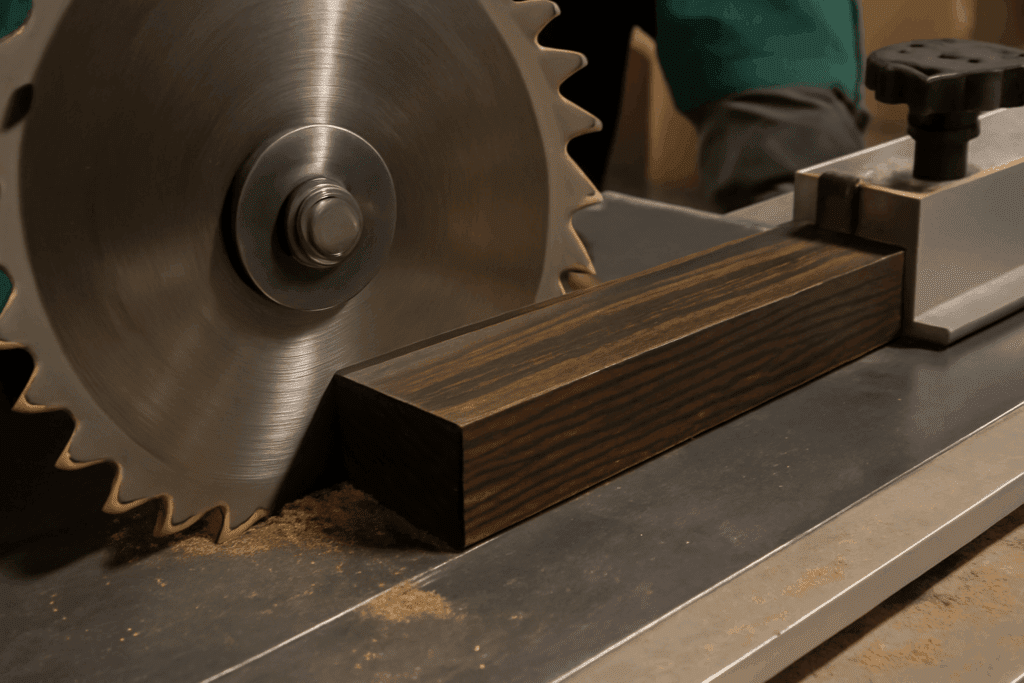
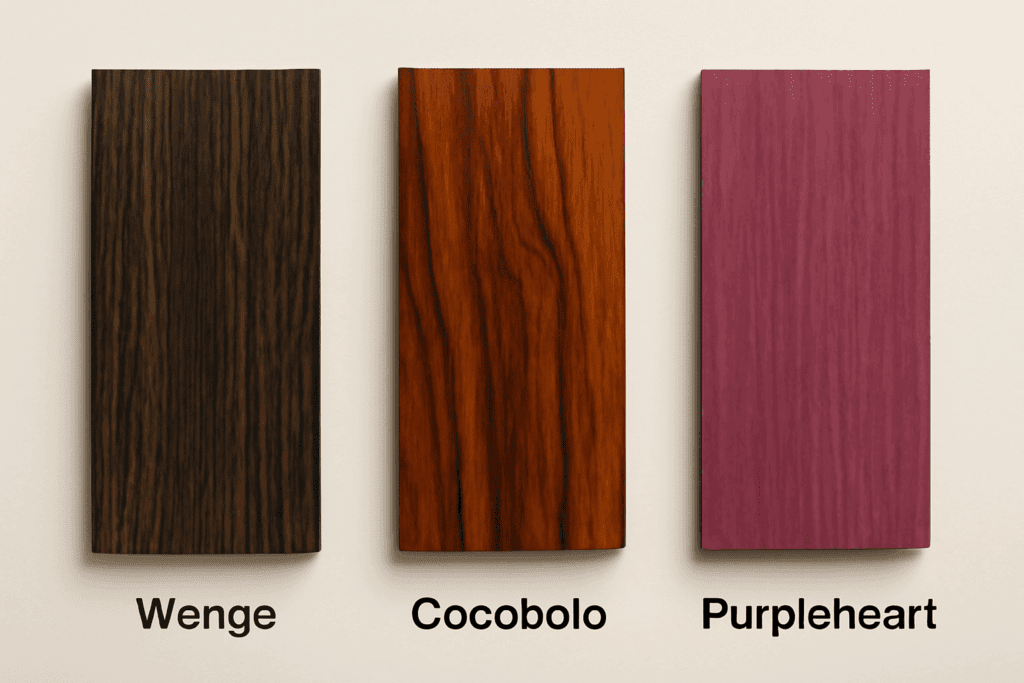
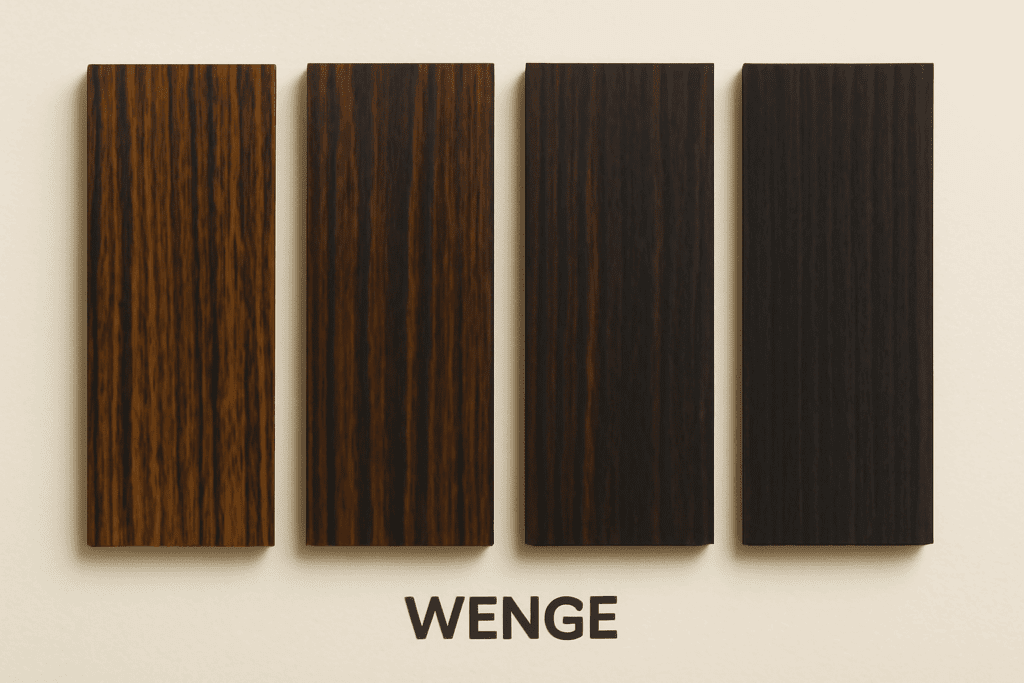
Explore More About Wood: